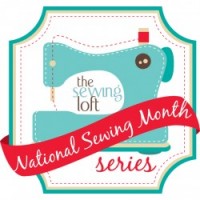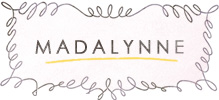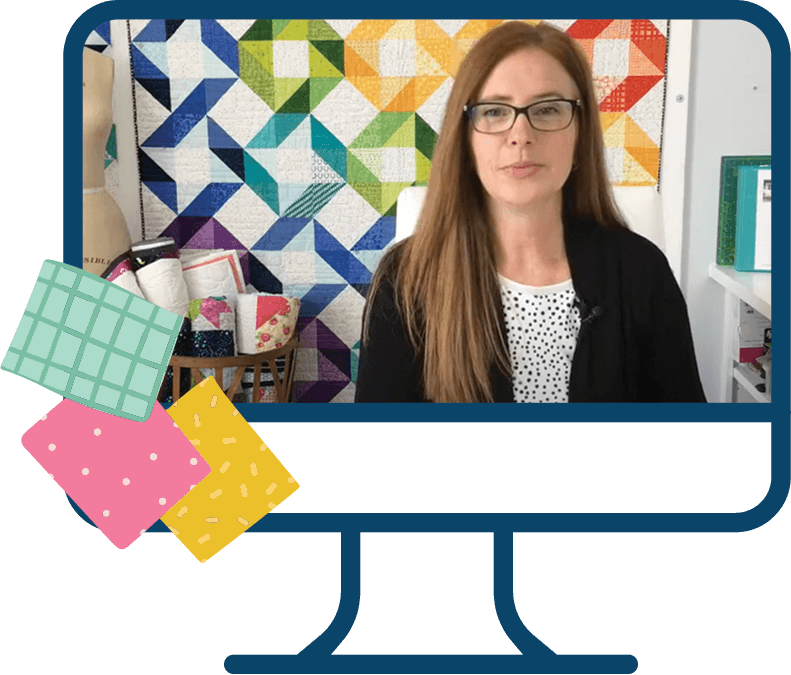I am so excited to have Maddie here to help us kick-start National Sewing Month her favorite tool in her work space. The Language of Fashion Book by Mary Brooks Picken.
Hi, my name is Maddie Flanigan and I am the blogger behind Madalynne, the cool sewing and pattern making blog. If Steve McQueen was the ‘King of Cool,” then Madalynne is the “Queen of Cool.” My blog covers everything from how to draft a sloper to interviews with seamstresses and what projects I’m currently working on. For two and a half years, my day job was in the technical design department for a very large fashion company in Philadelphia and about a year ago, this company took note of my personal blog and asked me to start an intranet blog that would create a cohesive voice for all their brands. Sweet, right? I consider myself one lucky gal to be able to do what I love both day and night (blog and sew), not to mention I receive a stellar discount off some really fancy clothes!
But enough about me, let’s talk sewing tools. Now, I know the first thing that comes to you mind when you think sewing tool is an instrument of some sort, like a presser foot, but can knowledge also be a tool? I have built my blog with knowledge-based tutorials because I believe that having a fundamental understanding of the project at hand is as important as having the right fabric, notions, and trims. One of my all-time coveted books is by a lady I admire greatly – Mary Brooks Picken. She’s one of those figures in history, like Nikola Tesla or Marconi, whose work left an indelible mark in their industry yet their name didn’t. Who they are didn’t seem to carry from then to know.
Picken was born in 1886 in Arcadia, Kansas and from an early age, she had a knack for sewing. She moved to Kansas City to study fashion and after moved to Scranton, Pennsylvania, where she founded The Women’s Institute of Domestic Arts and Sciences in 1916. Similar to online schools of today, the institute was a correspondence school that used classroom instructions in dressmaking, millinery, cooking, fashion design, beauty, and homemaking. The school’s enrollment reached 300,000 at one point, becoming the largest school in history solely dedicated to the education of women. The school was nothing short of amazing in that it was affordable and immediately generated income for women after graduation during a time when women couldn’t vote and less than 10 percent of women worked outside the home.
In 1925, Mary moved to New York City to be the editor of Pictorial Review, a popular magazine at the time. When she moved to the city, it was an era when fashion was roaring. Mary often traveled to Paris to cover fashion events and shows and she even met Chanel, describing her as “an amazing woman, full of ideas, of energy, of genius.“ While in New York, Mary achieved many other accomplishments. She was the first woman to be named a trustee of the Fashion Institute of Technology and she was one of the five original directors of the Costume Institute, which is now a part of New York’s Metropolitan Museum of Art. She became the first woman to publish a dictionary – The Language of Fashion (more on this book later!), which was later renamed The Fashion Dictionary. In the same social circle as the fashion designer Eleanor Lambert, Mary was part of the group who started New York Fashion Week in 1943 (she faithfully attended fashion shows well into her 80s).
Mary also wrote close to 100 books on the subject of dressmaking, pattern making, hats, foundations, tailoring, aprons, embroidery stitches, remodeling, maternity and infant clothing, etc. Her books didn’t just provide information and knowledge on sewing, rather, her books provided timeless wisdom on the everyday philosophy of life – how the home arts can prompt dignity, joy, meaning, and self-esteem in a woman’s life. In her book Thimblefuls of Friendliness, Mary writes, “Knowledge of any constructive kind, any educational or human hobby, is a rainy day fund. It makes life interesting, develops appreciation and teaches us the virtues of fidelity to honest purpose.”
Mary’s pioneering also inspired woman to form ‘Institute Clubs’ around the world where women found one another, shared with one another, and taught one another through classified ads. A vintage form of Facebook, women wrote to newspapers asking editors to introduce them to other women of their type so that they could share and learn. Kind of like the online sewing community of today, right? And we thought we were ahead of our time!
Now the book that I spoke of a few paragraphs back, the book that if went missing from my library would jeopardize the quality of my entire book collection is, The Language of Fashion. Inspirational and informative, it covers all, and I mean all, definitions of fashion related terms. One of my favorite pages, shown above, defines the different type of hats during that time period. Did you know what a chou hat was (highlighted above)? Well now you do! A chou hat is “a hat with soft, crushed crown. Derived from French word chou, meaning cabbage.” Filling up approximately 200 pages, this is my go-to book not only when I need to find out what a term means, but also when I need fresh blog content or a reminder of who I one day want to become – Mary Brooks Picken.
The Language of Fashion
A big thank you to Maddie for sharing The Language of Fashion and reminding us that tools come in all shapes. I never really thought of my books this way but now have a new appreciation for that stack of vintage pattern making books on my shelf. Oh and let’s not forget the next time you want to by a magazine at the store we can chalk it up as research. 😉
If you have already visited Madalynne than I must ask, don’t you just love her photos? Her photography is breath-taking! Be sure to stop by for a visit and say hello.
You can also find her here: Facebook | Instagram | Twitter
Stop by tomorrow when Marrisa from RaeGunRamblings shares her favorite tool and quick how to tip.







Comments & Reviews
Thank you for such a wonderful piece this morning. I teach sewing and am always educating my students on the history of sewing. I am certain they will enjoy and appreciate this one very much. Can I get copies?
if you click on the hyperlink above, it’ll take you to Amazon. You can also find more of Mary Picken’s books at Betterworldbooks.com.
Glad to see that I share a love of old fashion and sewing books with you! Thank you for a great post.